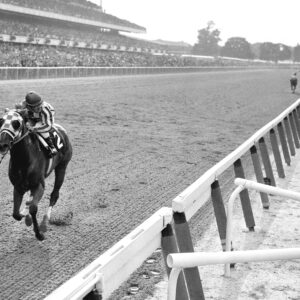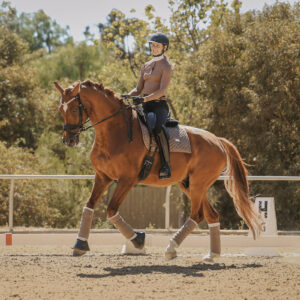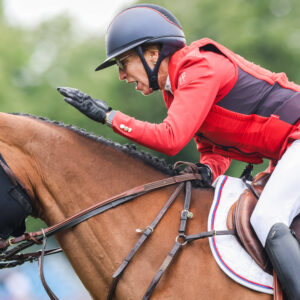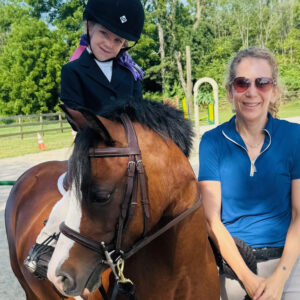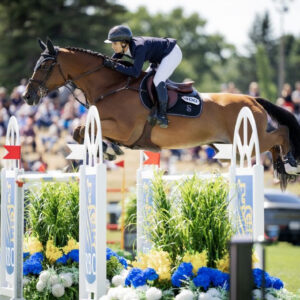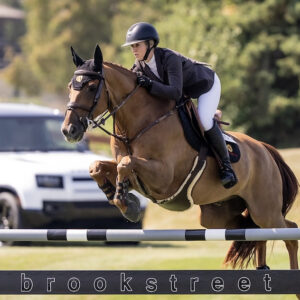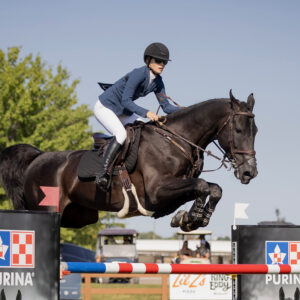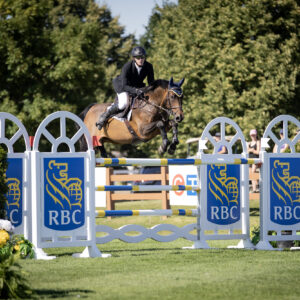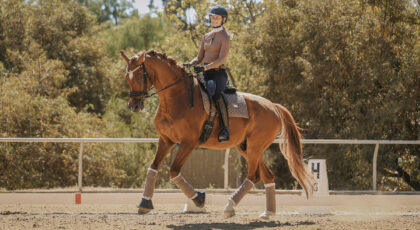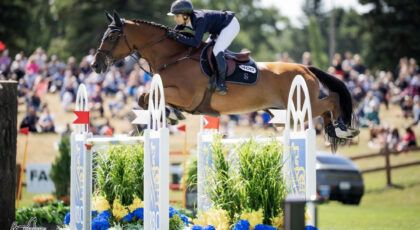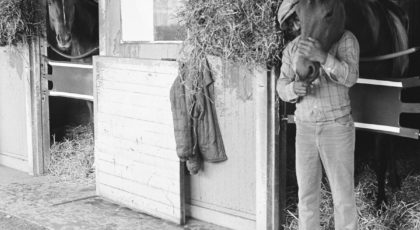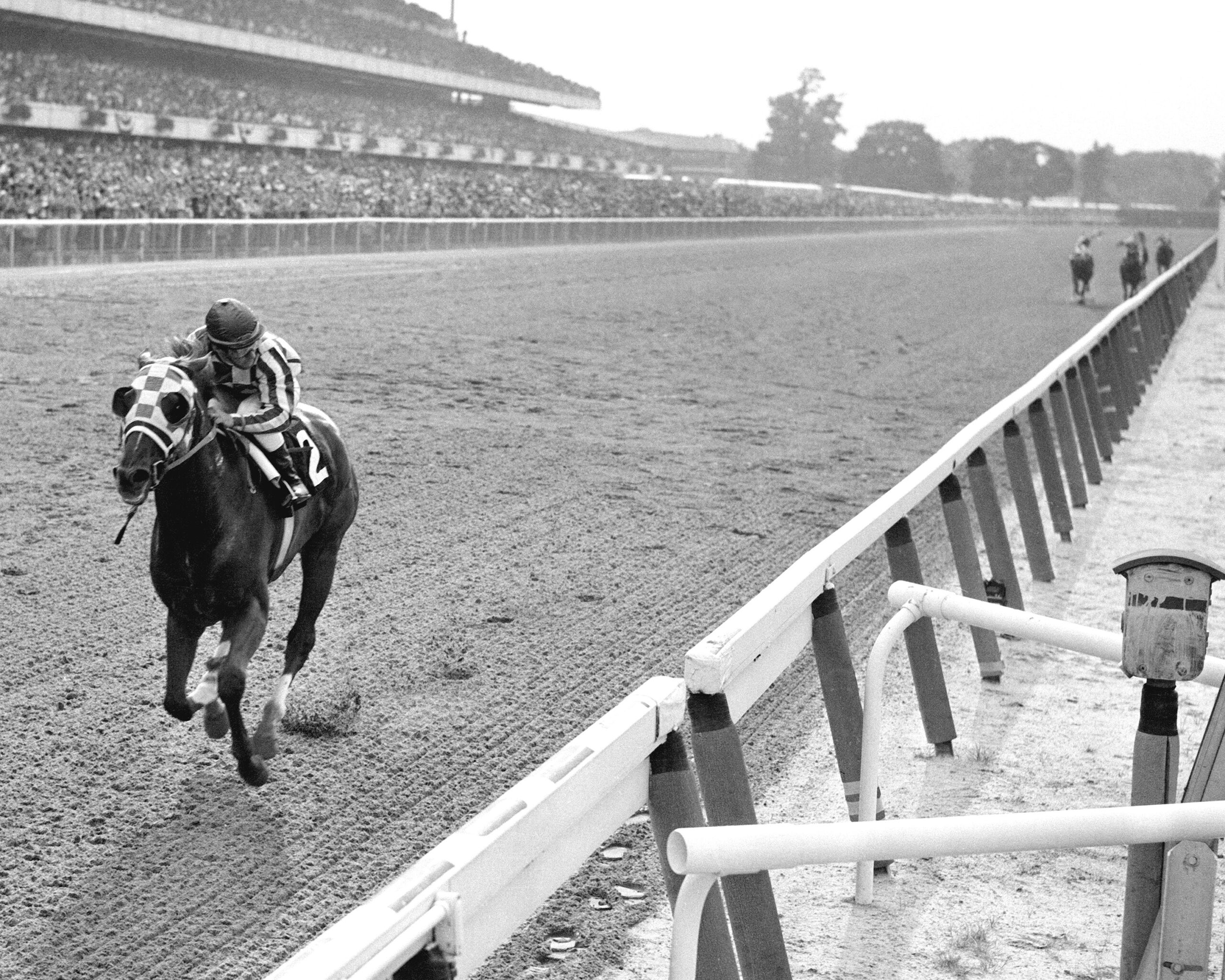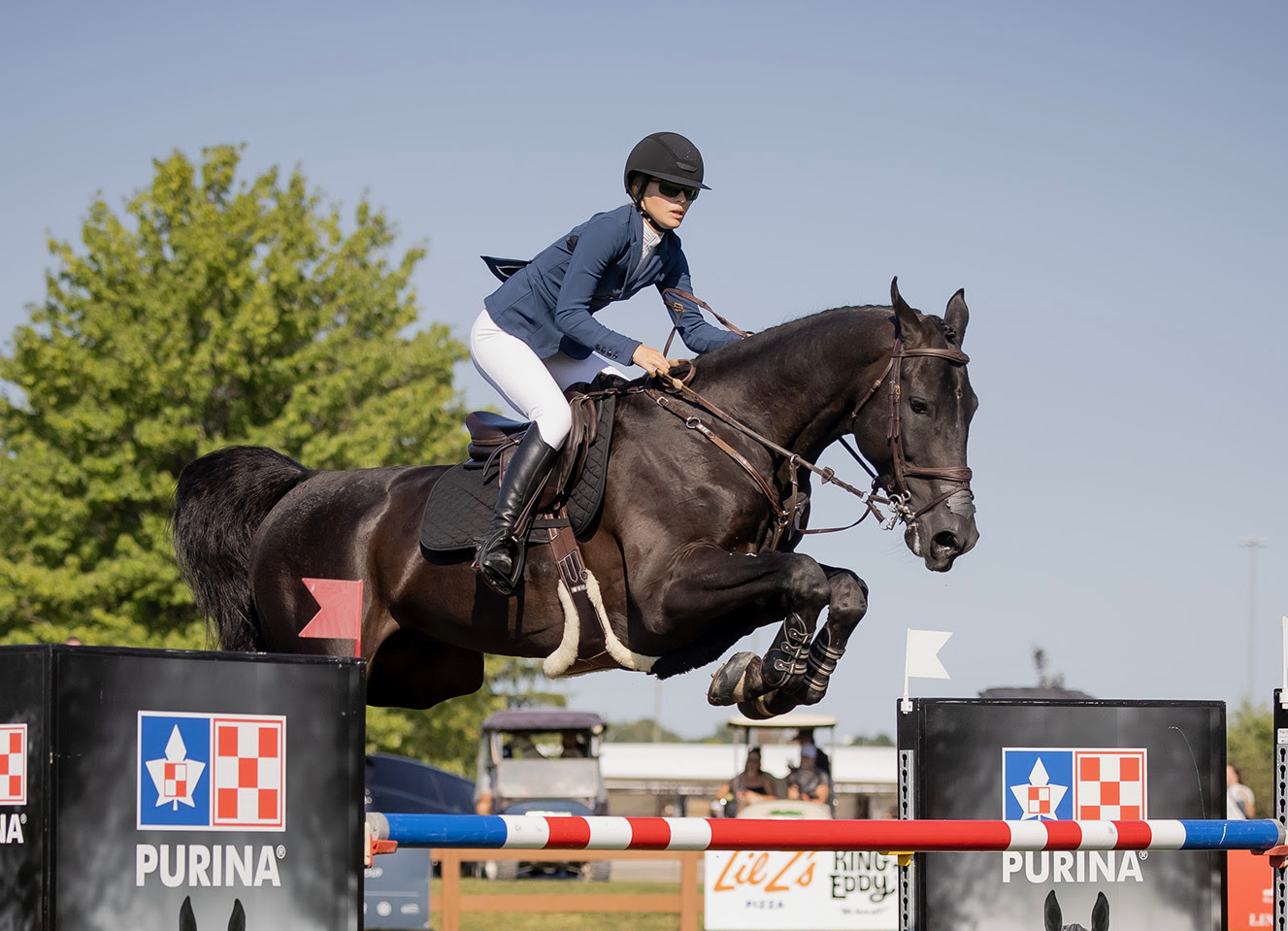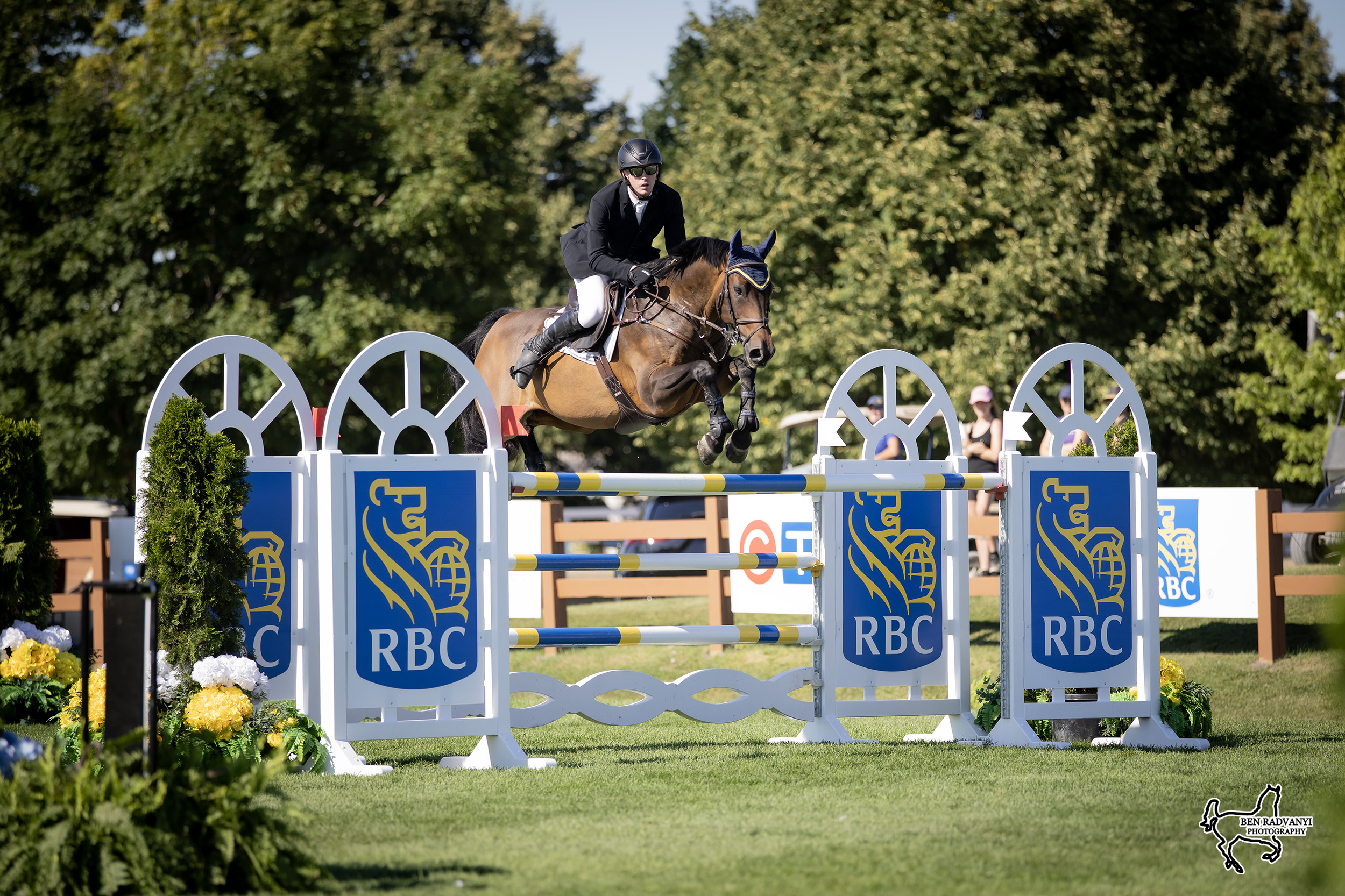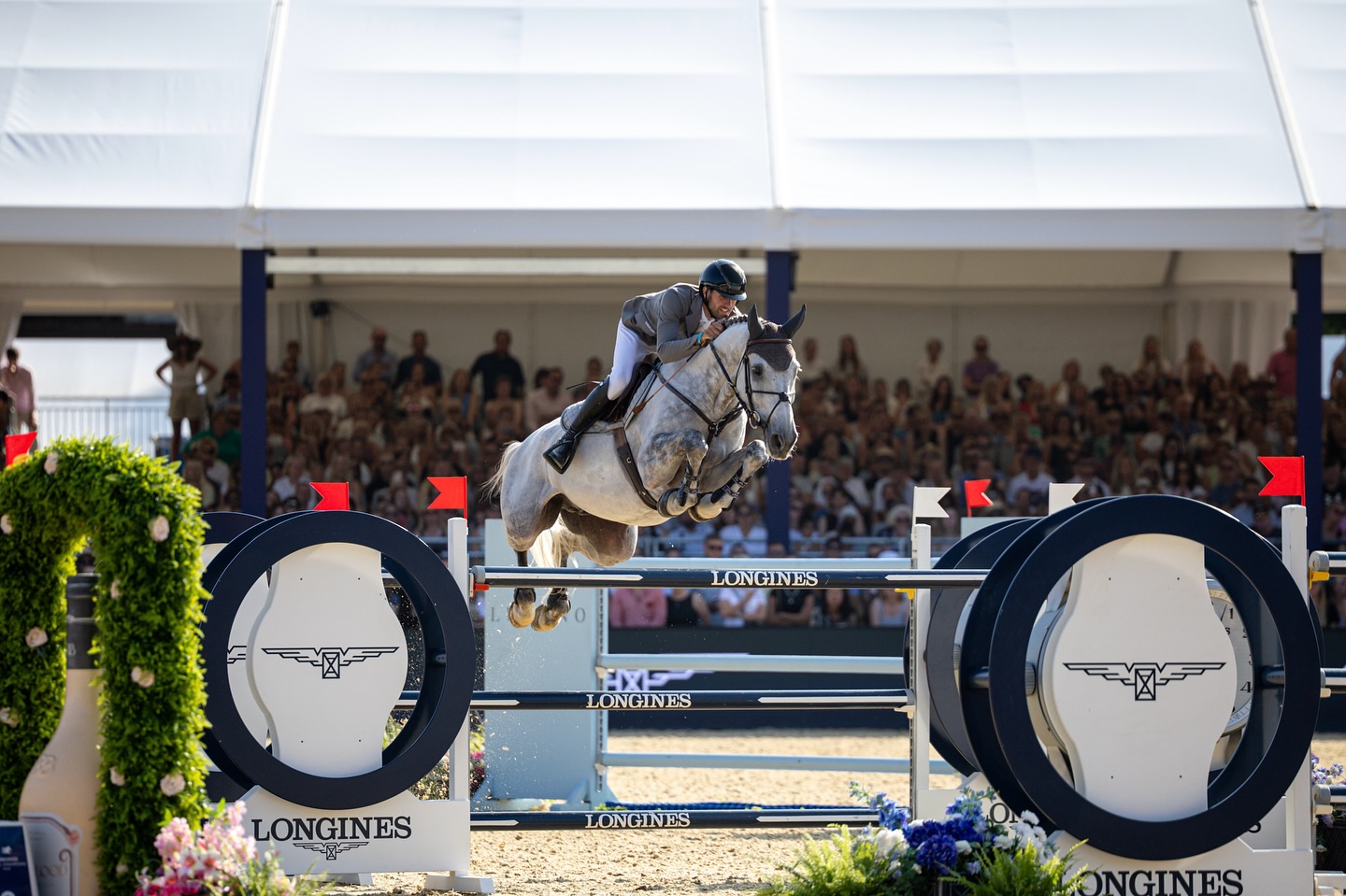Carolyn Cohen is an equine bodyworker, biomechanics expert, and independent tack fitter who founded her company, CC fits, in 2018. Her Equestrian Masterclass, Equine Biomechanics and Bodywork 101, teaches you about analyzing your horse’s movement and patterns in order to help him feel and perform his best.
Horses, just like people, can get into the habit of shallow breathing.
Stretching brings awareness to the horse’s ribs and diaphragm and can help your horse take deeper, more effective breaths. Most commonly, you will see people performing traditional forelimb and carrot stretches that are often quick movements. These are typically not the most effective for your horse, especially if they are not performed properly.
When stretching, the goal is to try to mimic the movements you’ll be asking the horse to do under saddle, and avoid over-flexing. Movements that are smaller, but can allow the muscle to adjust and stretch can help with mobility especially if your horse isn’t getting a lot of movement or turnout.
An often forgotten muscle group on the horse, the head and neck can benefit from a stretching routine just as much as the legs. Horses who graze on pasture regularly will typically have more supple, flexible polls and necks than stall-bound horses. Implementing these stretches into your routine can make a world of a difference in your horse’s mobility, but also softness and suppleness.
This is an excerpt from Carolyn’s Equestrian Masterclass, Equine Biomechanics and Bodywork 101. To access the course, as well as a full library of courses from the likes of Ian Millar, Anne Kursinski and more, go to equestrianmasterclass.com.

Stretch #1: The poll stretch
Place your hand flat on your horse’s poll. Apply light pressure and sway their head back and forth encouraging them to lower their head. Never push too hard—act as a guiding motion. Listen to your horse, release when necessary, and repeat until you feel your horse has made some progress.

Stretch #2: Opposite movement: The poll stretch
Acting as an opposite movement for the poll, keep your hand on the poll, making sure the head is straight. Put your hand under the jaw supporting it and encourage the head to come up and out, stretching the flexor muscles at the bottom. This stretch can be challenging, so be sure to have patience and give a lot of positive reinforcement to your horse.

Stretch #3: The neck stretch
Place your hand at the base of the neck as a support. Making sure your horse is focused and engaged, mimic the bend you have when you’re riding using your hand as a guide. Ask them to bend around with one hand on the halter and the other stabilizing the neck. Be sure to never pull hard and remember this is a supported stretch instead of fast and abrupt movement.
Check out Carolyn’s Equestrian Masterclass, Equine Biomechanics and Bodywork 101, at equestrianmasterclass.com.


 October 24, 2022
October 24, 2022 






